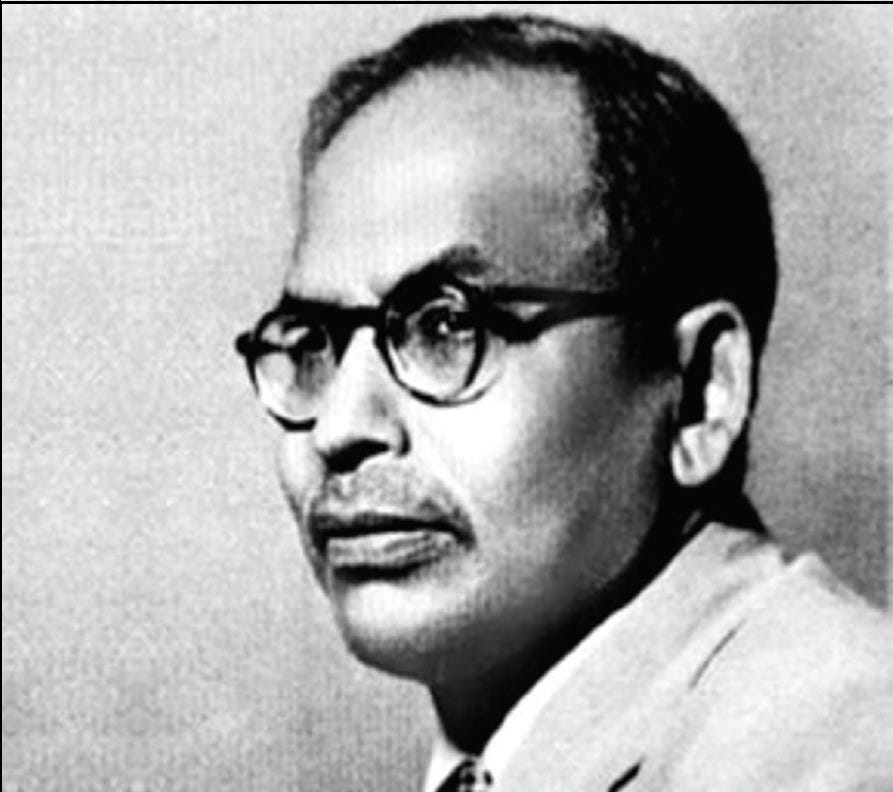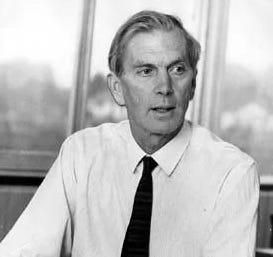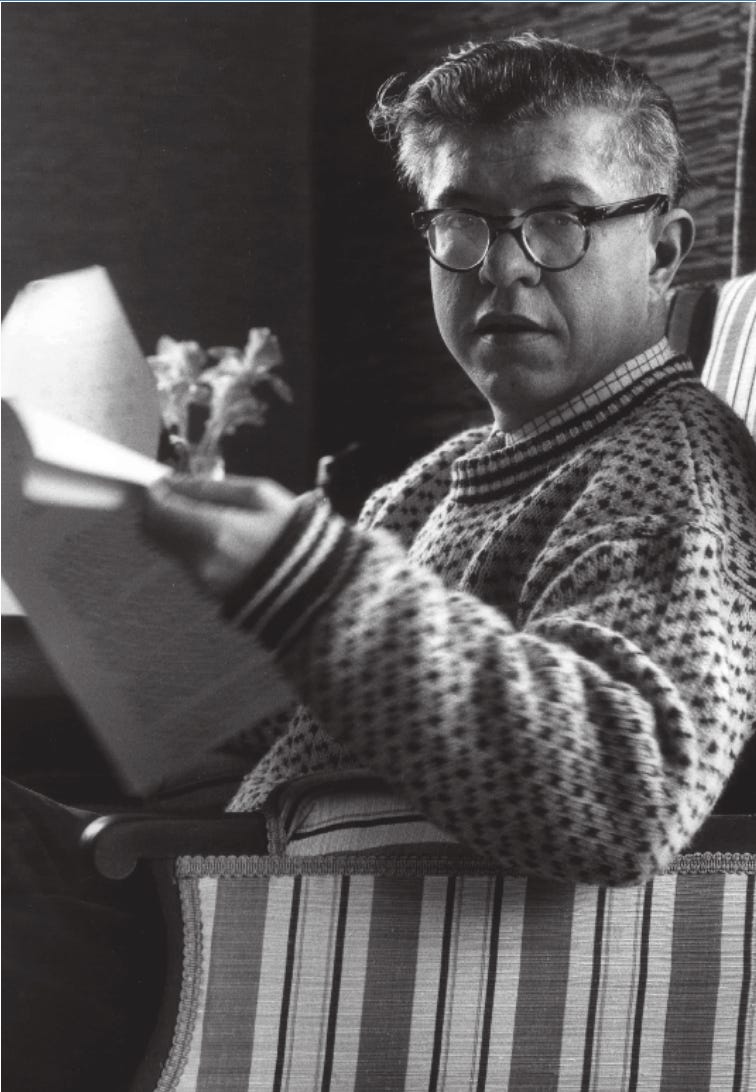Disputations and Controversies, Part 3: The Counting of Radio Sources
A cosmic controversy over radio sources led to a debate between well-known astronomers, challenging the very nature of the universe.
Before I describe my third story, I should stress a few developments in astronomy that were taking place in the post World War II era. The subject that till then had talked about stars and planets and the occasional comets was indicating that much more lay beyond. “Seek and ye shall find” was the motto that prompted astronomers to be more adventurous. In the 1920s, Meghnad Saha’s work on what later became known as ‘Saha’s Equation’ showed how to relate the spectroscopic studies of stars to their internal constitution. On the observational front, the 100-inch telescope at Mount Wilson, followed by the 200-inch telescope at the Palomar Mountain, had begun to reveal a rich and complex universe unknown during the times of Copernicus and Galileo.

A second major advance in astronomy was the introduction of radio astronomy. Just as stars and galaxies were known as radiation emitters in the optical range of wavelengths, are there objects in the universe emitting radio waves? Some pioneering experiments in the 1930s and World War II work on radars helped astronomers construct radio telescopes in the 1940s and 1950s. Major centres of radio astronomy came up in Cambridge and Manchester in the U.K., in Sydney, Australia and Caltech, U.S.A. Their findings were generally unexpected and led to arguments and controversies.
A major source of disagreement was whether the typical radio source was a galactic star or a galaxy in its own right. Martin Ryle and his radio astronomy group in the Cavendish Labs at Cambridge believed that the sources were radio stars in our Milky Way Galaxy, while Tommy Gold, an optical astronomer, supported the extragalactic option. The controversy between the two astronomers intensified to such an extent that Gold was banned from the Cavendish seminars. He, however, had the last word when optical studies conclusively proved that powerful radio sources like Cygnus A are extragalactic.


Gold was one of the three authors of the “Steady State Theory” (SST) of cosmology, the other two being Hermann Bondi and Fred Hoyle. Perhaps that was why Ryle was highly critical of SST and hoped to disprove it through his radio surveys. There was also a cultural bias: many scientists in the West naturally believed in a universe that had been created a finite time ago in a “big bang.” To them, SST was unacceptable!
In June 1960, I enrolled myself as a research scholar under the guidance of Fred Hoyle at Cambridge, whose lectures on cosmology I had found exciting and inspiring. At my first discussion meeting with him, he laid before me a list of interesting topics, suggesting that I might choose one for my Ph.D. research. When I looked at the ‘research menu,’ I was a little surprised, for there was no mention of cosmology in it. I mentioned this to him, and he clarified: “Work on cosmology is indeed interesting and worth doing, but I do not think a fresh research student should be involved in a problem that can be controversial.” I was a little disappointed but could appreciate his reason.
However, new developments intervened shortly before the year was out!
Ryle vs Hoyle
In September 1960, Fred Hoyle went to the US for a sabbatical visit. In his absence, what would I do? Very thoughtfully, he arranged for me to visit the relativity group at King’s College London once a week. The convener of the group was Felix Pirani, whom Fred had requested to act as my guide. Felix organized relativity lectures and seminars on Thursdays and suggested that I make day trips to London on those days. He very kindly provided me with a grant to cover such visits. The experts lecturing in Pirani’s included Roger Penrose, Ray Sachs, Josh Goldberg and occasionally Herman Bondi. Discussions with them certainly widened my horizons.
In the meantime, I chose a problem with spinning universes from Fred's research menu. Because in standard Big Bang cosmology, the universe began in an unphysical state, could one modify the model to avoid the ‘singular’ beginning? Some cosmologists advocated a spinning universe. Planets, stars, and galaxies spin: why not the universe? So Fred had asked me to pursue spinning universes.
Fred returned to Cambridge in late December, and I made a presentation on my work over the course of three months. I could show that my studies of spinning universes, as claimed by some theoreticians, would not work. Period‼ Interesting though this conclusion was, it raised the question of what other problem I should tackle for my Ph.D. At this stage, Fred replied: “We will think about that soon enough, but here is a problem that has come up to me as a challenge. Have a look.”
And he proceeded to show me some newspaper cuttings. They were from leading papers in London, describing a press conference by Ryle. The tabloids, as expected, had gone to town with headlines proclaiming proof of God and the origin of the universe. But even the Times, the Telegraph and the Guardian had given the news the priority of front page news. Shorn of the hyperbole, the news was that Martin Ryle and his radio group had claimed to have destroyed the SST on the basis of their radio surveys. The challenge which Hoyle had referred to was directed at him. How was he going to defend his theory?

Over the years, Ryle’s group had been conducting systematic surveys of radio sources. With improved technology, the surveys picked up fainter and fainter sources. Since the more remote a source, the fainter it would be, it was claimed that all these sources were far away. Also, when a telescope spots a remote source, it sees it not at the epoch of observation, but at the epoch when light has left the source. Therefore, Ryle & Co claimed that their survey gave important information on what the state of the universe was like in the remote past.
One such information was on the density of the universe. The Cambridge finding was that there were far too many remote sources–implying that the density of matter in the past was more than what it is today. Since the SST was specific in claiming that the universe is unchanging on the long timescale (as implied in the adjective “steady state”), Ryle concluded that his data disproved the steady state theory. Hoyle took it as a personal challenge and wanted to counter Ryle’s charges. However, he wisely kept away from the media, and disclosed his intention to reply to Ryle’s claim at the next general meeting of the Royal Astronomical Society (RAS), where Ryle was formally presenting his claim. The RAS holds its general meeting on the second Friday of every month. The meeting has a history of debates and controversies, and the one scheduled for the 10th of February was expected to generate a few fireworks.
Realizing that the above schedule gave him very little time to prepare his counter to Ryle, Hoyle suggested that I might help in the process. There were difficulties, however. To prepare a counter, we needed Ryle’s data. Ryle was known to be secretive with his data. After some persuasion, he agreed to meet us in the Tea Room of the Cavendish. There, he produced a sheet of paper with a graph of the number-flux density relation. It was a crudely hand-drawn affair, certainly not one that would be acceptable in a research journal. Handing us the paper, he remarked that that was the best he could do.
We then used two assumptions: one, that the probability of a galaxy becoming a radio source increased with its age, and two, that galaxies were not homogeneously distributed in the universe at all scales as assumed by theoreticians. We showed that gigantic super-clusters and voids on the scale of 150 million light years would introduce large fluctuations in the Ryle-type predictions.
In short, if the universe is inhomogeneous on such a scale, the entire methodology of using surveys to test cosmological models becomes meaningless.
I was becoming relaxed, feeling that Fred had some strong counterpunches to deliver on Friday. But not for long! Fred broke the news: On the 10th of February in the afternoon, he was committed to delivering a public lecture in a London college. This commitment had been made long before and could not be changed. So he would not be present at the RAS meeting. Instead, he proposed that I should give our point of view after Ryle made his presentation.
I was shattered! I had no public speaking experience, nor had I ever debated on any scientific issue. Besides, the ‘opposition’ was well-versed in the issue and would use their experience to kill any criticism.
I mentioned all these points to Fred, showing my reluctance to speak at the RAS. He dissuaded me by saying that this occasion might be a turning point in my life, providing me with fresh experience. As for facing an experienced and hostile team, he said, “As you are presenting the argument backed by sound mathematics, you need not worry about the experience of the opposition.” He assured me that Hermann Bondi, Secretary to RAS, would be there and help if I got stuck at any point. So I finally agreed! When leaving his presence, I did well to remember his advice: “You are given 10 minutes for your talk–make sure that you will say all the necessary facts in 8 minutes.”
Thus, after Ryle’s talk on his work at the RAS meeting, Bondi, followed by me, commented. When I began my talk, all my earlier nervousness vanished. Thanks to my time planning, I delivered it before the 8-minute barrier was reached.
When the talk was over, there was some discussion, after which the President proposed a vote of thanks and especially mentioned my participation.
So all is well that ends well! Walking down Piccadilly towards the Green Park tube station, I recalled Fred Hoyle’s intention to keep me away from controversies!


Thank you so much. There are a lot of takeaways. Avoid controversies.. Planning well for speech.. Radio and optical sources to understand cosmological distances.. Steady State Theory (is it still being pursued?).. spinning universe (what subject was finally taken for P.hd.)..
It must have been a great experience for everyone there proposing and defending theories every month.
Cosmology is filled with controversies and disputations.. and I am sure everyone loves your simple writing style and your presentation of each controversy.
Am not a person with science backgroud. Yet it is indeed a pleasure to read JV's blog - a privilege indeed - and thanks again to Tarun Souradeep for letting me know of this link